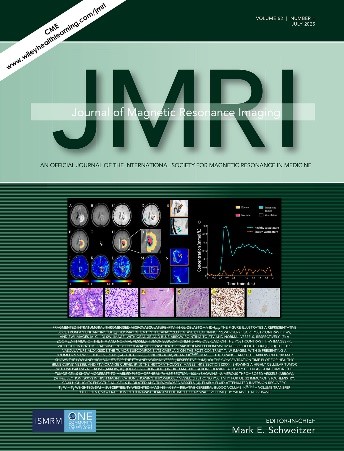One of my favorite movies is Eternal Sunshine of the Spotless Mind. Perhaps because it takes place where I grew up (Long Island). Perhaps because of its theme.
This is a multilayered, nonlinear movie, but if I had to encapsulate its themes, they would be the inevitability of life and the pain of loss.
Once I was an expert witness in a trial. The attorney asked me “Dr. Schweitzer you’re a radiologist, aren’t you?” To which I answered, “Yes.” The attorney then asked me, “You look at images only and don’t see patients?” And I said, “Yes, as a radiologist I interpret images of patients without physically seeing them.” He then said, “you don’t know how much pain my client is in” and then followed that with “doctor, you can’t see pain can you?” For the latter, I am embarrassed that I said “yes, we cannot tell from the images, what pain your client is in.”
In nearly every scene of Eternal Sunshine of a Spotless Mind there is a vignette of loss. One poignant scene shows a mother holding a little league trophy in the brain cleanser’s waiting room. The camera pauses just for a fraction of a second and we, the audience, realize she has lost a young son, and wants to escape from even the good memories. When the pain is unbearable, the protagonist wishes to erase all memories that are related to that pain. Although this is an old movie, filmed at the dawn of the brain mapping revolution, there is a seminal scene where a character’s brain is being scanned to identify the location of the memories that will be erased. In the background, just for a few milliseconds, they actually show an archaic MRI image.
In fact, I gave an incorrect response during that deposition — images can see pain. Over the years, JMRI has received many, many papers related to this. My answer was not only wrong, but a manifestation of some ignorance on my part.
Advances in science are inevitable. Even if this movie came out a decade earlier, we could predict that shortly we would see pain. This was probably clear to most of the early researchers in fMRI.
These scientific advances are evolutionary, rather than revolutionary. Hence, we don’t see how advanced we have become unless you look back.
Evolution is inevitable. Hence, it was inevitable that we could see pain. It is also inevitable that we can’t see what we will see until we look back later. That is our loss, but nothing to grieve about.
Mark E. Schweitzer, MD
—
Cover Image
Free Access
Virendra Kumar Yadav MTech, Shalini Sharma MD, Satyajit Maurya MTech, Rakesh K. Singh MSc, Jitendra Saini MD, Preeti Jain MD, Rana Patir MCh, Sunita Ahlawat MD, Sumanta Das MD, Sandeep Vaishya MCh, Sumeet Agarwal PhD, Anup Singh PhD, Rakesh K. Gupta MD
Page: spcone | First Published: 19 June 2025
Fragmented Intratumoral Thrombosed Microvasculature (FTV) in Glioblastoma IDHWT. The Figure Illustrates a Representative Slice from an Enhancing IDHWT GLIOMA Patient in the Analyzed Dataset, Featuring Pre-Surgery Flair, Post-Contrast T1-W, and SWI Images (A-C). (D) SWI Image, with Orange and Blue Arrow Pointing to FTV and Normal Vessels, Respectively. (E) A Zoomed-In View of the FTV and Normal Vessels. Tumor Subcomponents are Overlaid on the Post-Contrast T1-W Images (F), While the Intratumoral Susceptibility Signal (ITSS) Vasculature Mask Derived from SWI Images is Depicted in (G). (H) The ITSS Vasculature Alongside the Tumor Subcomponents Overlaid on the Post-Contrast T1-W Images, with (I) Presenting a Zoomed-In View of this Overlay. (J-L) The Corresponding rCBV, Ve, and Ktrans Images. The Orange and Blue Arrow on rCBV Map Shows the Low and High Values for the FTV and Normal Vessel, Respectively (M). (O) The Concentration Time Plot for Healthy (Blue Curve) Vessel and FTV (Orange Curve). (P-U) The Histopathology Images. H&E Section (2003) Showing a Highly Cellular Tumor with Palisading Necrosis (Arrow) (P). (Q) H&E Section (4003) In High Magnification Showing a Highly Cellular Glial Tumor. The Tumor Cells Show Moderate to Marked Pleomorphism. (R) H&E Section (1003) Showing Numerous Thrombosed Vessels (Arrow). (S) H&E Section (2003) In High Magnification Showing Thrombosed Vessel. (T) Strong Positivity for OLIG2 Immunohistochemistry. CD34 Highlights Endothelial Cells in Dilated and Thrombosed Vessels (U). Flair = Fluid-Attenuated Inversion Recovery; T1-W = T1-Weighted; SWI = Susceptibility-Weighted Imaging; rCBV = Relative Cerebral Blood Volume, KTRANS = Volume Transfer Coefficient; Ve = Fraction of Extravascular and Extracellular Space Volume). By Yadav et al. (258-270)
Issue Information
Free Access
Pages: 1-6 | First Published: 19 June 2025
Review
Ben Zhao MD, Buyue Cao MS, Tianyi Xia MD, Liwen Zhu MS, Yaoyao Yu MD, Chunqiang Lu MD, Tianyu Tang PhD, Yuancheng Wang MD, Shenghong Ju MD, PhD
Pages: 9-19 | First Published: 09 January 2025
Open Access
Magnetic Resonance Acoustic Radiation Force Imaging (MR‐ARFI)
Henrik Odéen PhD, Allison H. Payne PhD, Dennis L. Parker PhD
Pages: 20-39 | First Published: 22 January 2025
Visualizing Preosteoarthritis: Updates on UTE‐Based Compositional MRI and Deep Learning Algorithms
Dong Sun MD, Gang Wu MD, Wei Zhang MD, Nadeer M. Gharaibeh MD, Xiaoming Li MD, PhD
Pages: 40-57 | First Published: 10 January 2025
Breast
Open Access
Breast MRI to Screen Women With Extremely Dense Breasts
Carla Sitges MD, Ritse M. Mann MD, PhD
Pages: 58-72 | First Published: 24 January 2025
Research Article
Head and Neck
Fan Yang MD, Haoran Wei MD, Xiaolu Li MD, PhD, Xiaoduo Yu MD, PhD, Lin Li MD, PhD, Yanfeng Zhao MD, PhD, Lizhi Xie PhD, Yueluan Jiang PhD, Meng Lin MD, PhD, Hongmei Zhang MD, PhD
Pages: 73-86 | First Published: 10 March 2025
Editorial
Nico Sollmann MD, PhD
Pages: 87-88 | First Published: 10 March 2025
Research Article
Pediatrics
Jing-Ya Ren MD, Chang-An Chen MD, Ming Zhu MD, Ke Liu MD, Li-Jun Chen MD, PhD, Su-Zhen Dong MD, PhD
Pages: 89-100 | First Published: 04 December 2024
Editorial
Aviad Rabinowich MD, Livia Kapusta MD, PhD
Pages: 101-102 | First Published: 06 December 2024
Research Article
Breast
Open Access
Jie Ding MD, PhD, Zhen Zhang BD, Hongyan Xiao MD, Lijia Zhi PhD, Xiuzheng Yue PhD, Dazhi Chen MD, Rongrong Zhu MD, Lili Yang MD, Chao You MD, PhD, Yajia Gu MD, PhD
Pages: 103-113 | First Published: 31 January 2025
Editorial
Benjamin C. Musall, Ryan J. Bosca-Harasim
Pages: 114-115 | First Published: 28 February 2025
Research Article
Cardiac
Left Ventricular Hemodynamic Forces Changes in Fabry Disease: A Cardiac Magnetic Resonance Study
Jialin Li BMSc, Shichu Liang MD, Ziqian Xu MD, Ke Wan MD, Lutong Pu BMSc, Jie Wang MD, Yuchi Han MD, Yucheng Chen MD
Pages: 116-127 | First Published: 22 January 2025
Editorial
Scott D. Flamm MD, MBA
Pages: 128-129 | First Published: 28 January 2025
Research Article
Cardiac
Jin-Yi Xiang MD, Yun Zhao MD, Wei-Hui Xie MD, Dong-Aolei An MD, Bing-Hua Chen MD, Rui Wu MD, Chong-Wen Wu MD, Ruo-Yang Shi MD, PhD, Yan Zhou MD, PhD, Lei Zhao MD, PhD, Min-Jie Lu MD, PhD, Lian-Ming Wu MD, PhD
Pages: 130-141 | First Published: 30 December 2024
Editorial
Masaaki Takeuchi MD, PhD
Pages: 142-143 | First Published: 06 January 2025
Commentary
Cardiac
Lingyi Wen, Zhongqin Zhou, Chuan Wang, Shiganmo Azhe, Kaiyu Zhou, Yingkun Guo
Pages: 144-145 | First Published: 12 March 2025
Research Article
Musculoskeletal
Open Access
Stephen J. Foulkes PhD, Mark J. Haykowsky PhD, Rachel Sherrington BSc, Amy A. Kirkham PhD, Justin Grenier MSc, Peter Seres MSc, David I. Paterson MD, Richard B. Thompson PhD
Pages: 146-159 | First Published: 24 January 2025
Simultaneous Bilateral T1, T2, and T1ρ Relaxation Mapping of Hip Joint With 3D‐MRI Fingerprinting
Anmol Monga MS, Hector Lise de Moura PhD, Marcelo V.W. Zibetti PhD, Thomas Youm MD, Jonathan Samuels MD, Ravinder R. Regatte PhD
Pages: 160-173 | First Published: 24 December 2024
Editorial
Cory R. Wyatt PhD
Pages: 174-175 | First Published: 30 December 2024
Research Article
Musculoskeletal
Ke Liu MS, Jinlai Ning MS, Siyuan Qin MD, Jun Xu MS, Dapeng Hao MD, Ning Lang MD
Pages: 176-186 | First Published: 27 January 2025
Editorial
Grace McIlvain PhD, Zhuoyu Shi BS
Pages: 187-188 | First Published: 29 January 2025
Research Article
Vascular
Ioannis Koktzoglou PhD, Onural Ozturk MD, William J. Ankenbrandt MD, Matthew T. Walker MD, Zachary B. Bulwa MD, Fulvio R. Gil MD, William J. Ares MD, Nondas Leloudas RT, Robert R. Edelman MD
Pages: 189-200 | First Published: 09 January 2025
Runze Li BS, Jinhao Lyu MD, Rui Hu MD, Qi Duan MS, Wanbing Wang MS, Xiangbing Bian MS, Caohui Duan PhD, Song Wang BS, Xiaolin Guo BS, Aoxue Mei BS, Xin Lou MD
Pages: 201-212 | First Published: 09 January 2025
Editorial
Hossam Youseff MB, BCh, Rodolfo G. Gatto MD, PhD
Pages: 213-214 | First Published: 10 January 2025
Research Article
Vascular
Open Access
Junyeon Won PhD, Tsubasa Tomoto PhD, Kevin Shan BS, Takashi Tarumi PhD, Rong Zhang PhD
Pages: 215-229 | First Published: 10 January 2025
Editorial
Harald E. Möller PhD
Pages: 230-231 | First Published: 04 February 2025
Research Article
Pelvis
Xin Chen MD, PhD, Xiaohan Zheng MSc, Xianyun Cai MD, PhD, Huiwen Wang BSc, Ruiqin Shan BSc, Yongzhong Gu MD, Xietong Wang MD, Guangbin Wang MD, PhD
Pages: 232-241 | First Published: 09 January 2025
Editorial
Evgenia Efthymiou MD, Nikolaos L. Kelekis MD
Pages: 242-243 | First Published: 09 January 2025
Research Article
Safety
The Effects of Moderate to High Static Magnetic Fields on Pancreatic Damage
Ying Wang PhD, Weili Chen MS, Junjun Wang PhD, Chao Song PhD, Lei Zhang PhD, Xin Zhang PhD
Pages: 244-257 | First Published: 09 January 2025
Neuro
Virendra Kumar Yadav MTech, Shalini Sharma MD, Satyajit Maurya MTech, Rakesh K. Singh MSc, Jitendra Saini MD, Preeti Jain MD, Rana Patir MCh, Sunita Ahlawat MD, Sumanta Das MD, Sandeep Vaishya MCh, Sumeet Agarwal PhD, Anup Singh PhD, Rakesh K. Gupta MD
Pages: 258-270 | First Published: 09 January 2025
Sadegh Ghaderi, Sana Mohammadi, Amir Mahmoud Ahmadzadeh, Kimia Darmiani, Melika Arab Bafrani, Nahid Jashirenezhad, Maryam Helfi, Sanaz Alibabaei, Sareh Azadi, Sahar Heidary, Farzad Fatehi
Pages: 271-294 | First Published: 20 January 2025
Open Access
Naoki Ohno, Tosiaki Miyati, Masatomo Uehara, Riho Okamoto, Mitsuhito Mase, Satoshi Kobayashi
Pages: 295-302 | First Published: 21 March 2025
Letter to the Editor
Suspicious MRI Safety Statistics
Michael Steckner, Shao Jin Ong, Martin J. Graves
Pages: 303-305 | First Published: 24 April 2025
Correction
Free Access
Correction to “Pediatric Z‐Score Calculator of Cardiac MRI Volumetric Measurements”
Page: 306 | First Published: 06 June 2025
This article is a correction.





